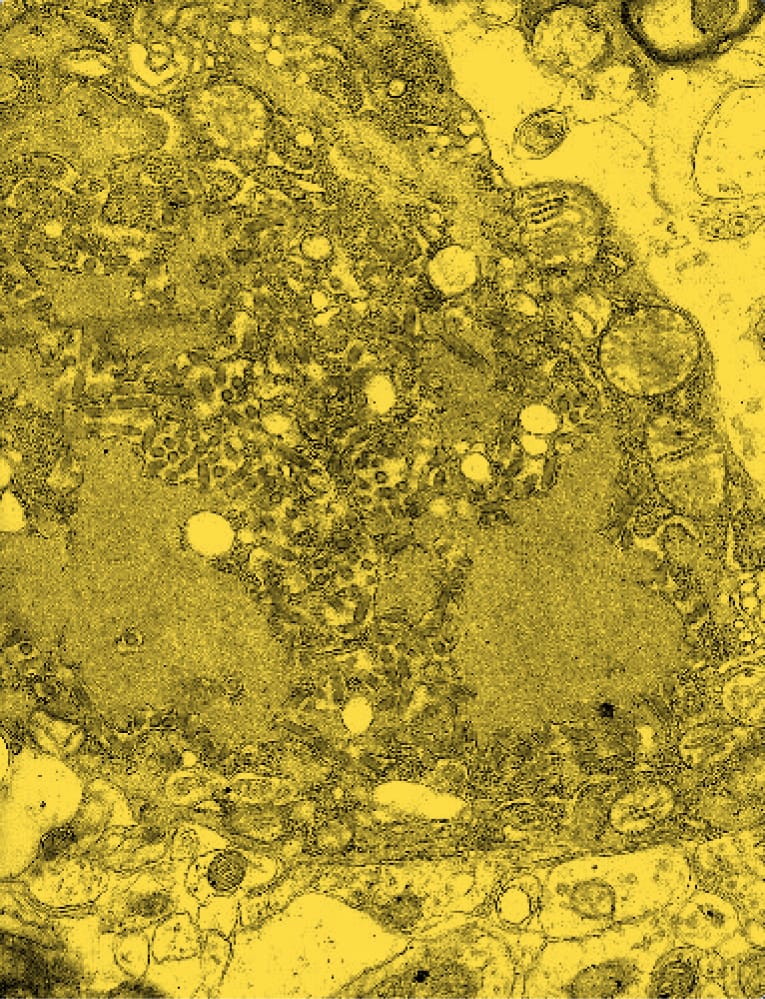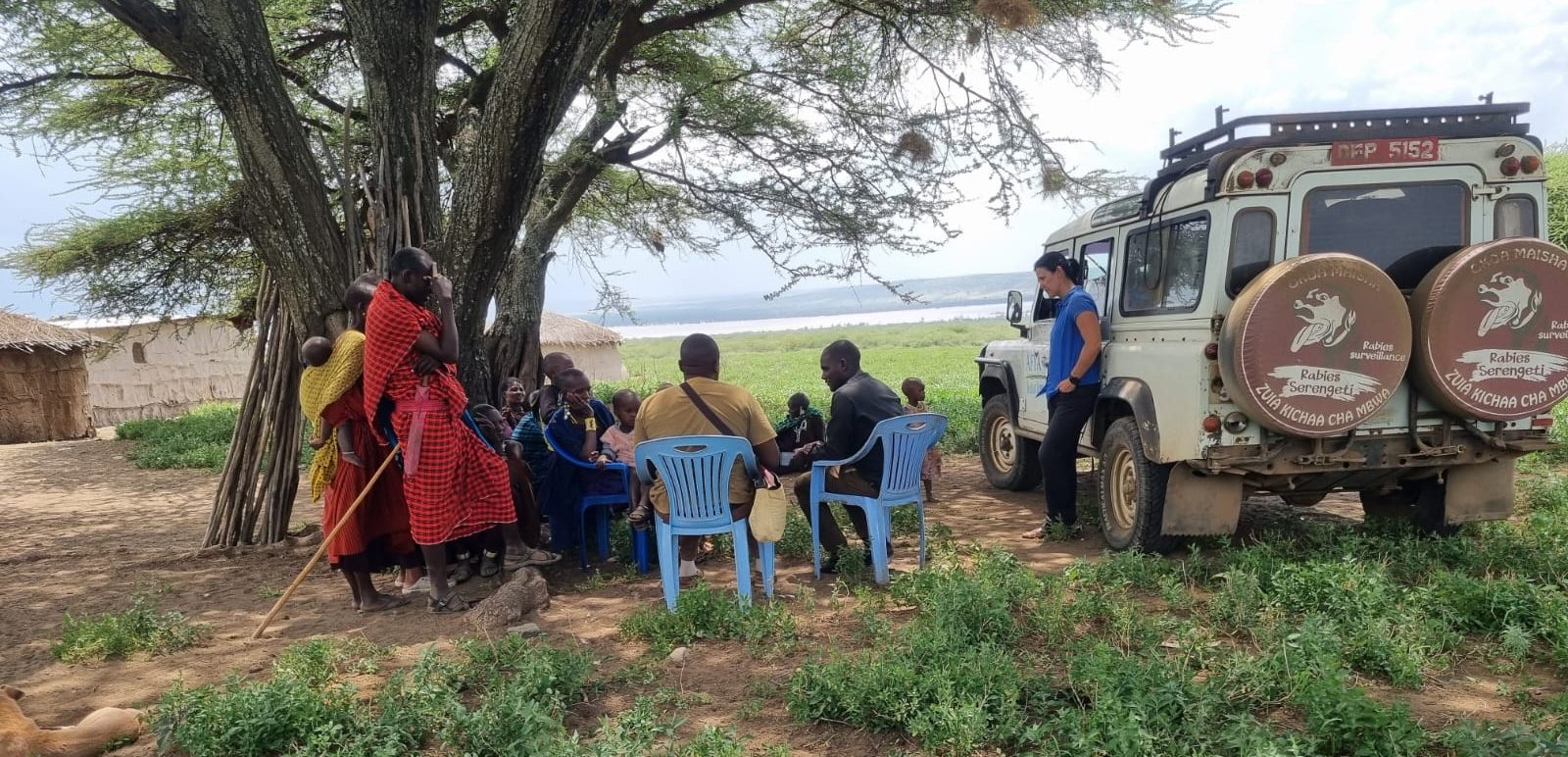About Rabies
A viral disease that affects the central nervous system, rabies is transmitted to humans primarily through animal bites.1 It can also be spread through the saliva of an infected person. Symptoms, which begin when the virus reaches the brain, typically manifest two to three months after exposure, but may appear anywhere from a few weeks to several years later.2 Early non-specific symptoms such as fever progress to neurologic symptoms such as confusion and agitation, painful muscle spasms, inability to drink and an aversion to water. Rabies is nearly universally fatal, usually within two weeks of symptom onset.3
The disease claims more than 59,000 lives each year, and many of those deaths occur among children.4 The highest death rates occur in the poorest countries in Africa, and the burden falls disproportionately on communities that lack access to robust public health and health care systems and have extensive exposure to domestic and wild animals.5
Rabies is vaccine-preventable. Vaccination of dogs before rabies exposure is effective at preventing rabies transmission to humans, but in many countries where rabies is endemic, this strategy has not seen sustained investment. Preventive human vaccination is costly; vaccination prior to exposure is recommended only for high-risk populations, including those whose professional or personal activities might bring them into contact with infected animals.
The vaccine can also prevent rabies when given quickly after exposure. This post-exposure prophylaxis (PEP) is highly effective if started before the onset of symptoms—thus, early identification of exposure to rabies is a matter of life or death.
But there are many barriers to PEP access. Vaccine is not available in many settings where rabies is endemic, travel to health care settings that offer PEP can be lengthy, logistically complicated and expensive, and the cost of PEP itself is often prohibitive. Lack of awareness of PEP among both the general public and local health care workers is a further obstacle to preventing human deaths from rabies.
If left untreated, rabies is nearly universally fatal, usually within two weeks of symptom onset.
In Tanzania, where rabies is called kichaa cha umbwa (Swahili for “madness of dogs”), an estimated 1,500 people die each year from the disease,6 though the true number may be much higher.7 The Tanzanian government aims to eliminate rabies in the country by 2030, with strategies including sustained mass vaccination of dogs and increasing access to PEP.8
You can learn more about rabies here.
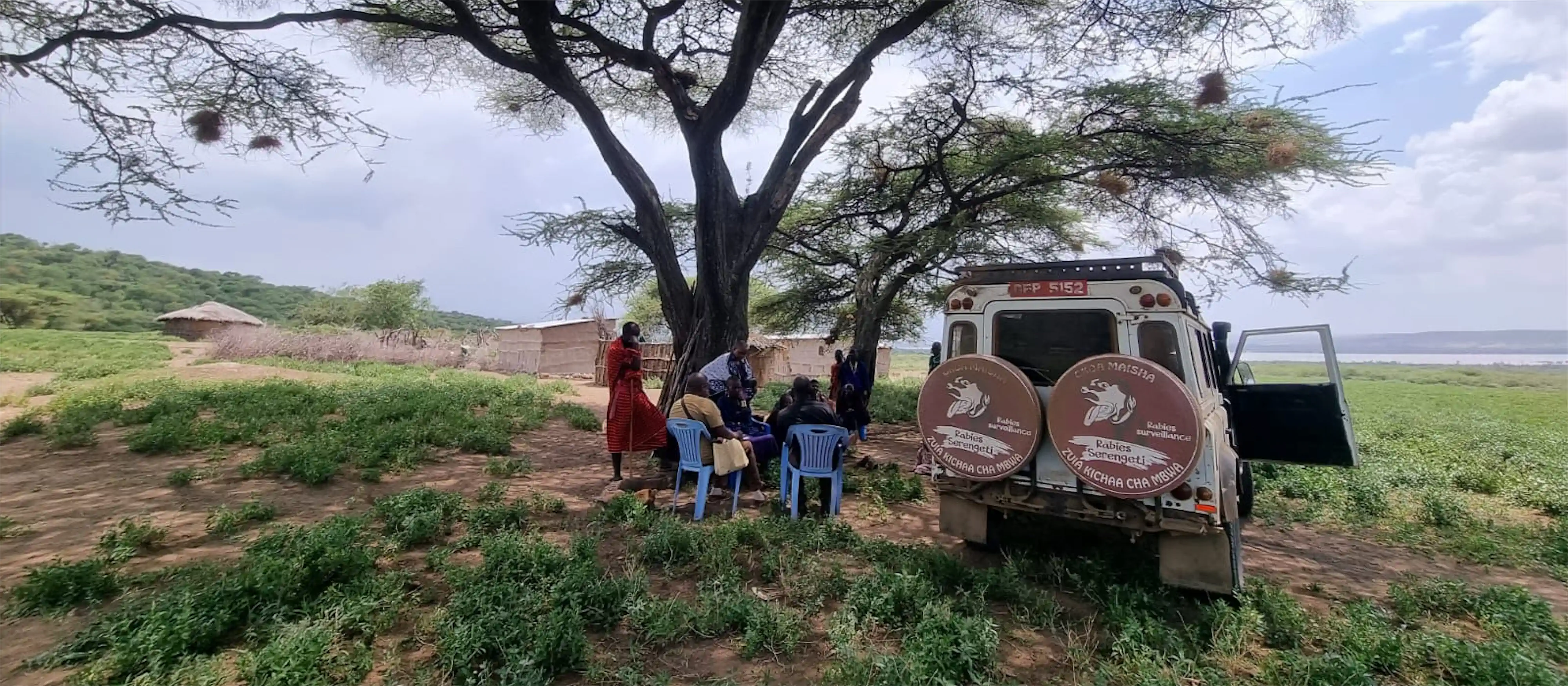
What Happened
On March 6, 2022, a 12-year-old boy showing symptoms consistent with rabies arrived at the Foundation for African Medicine & Education (FAME), a hospital in Karatu, Tanzania. His family told doctors that on February 14, an unfamiliar dog had bitten him in an unprovoked attack. Two weeks after the bite, the boy developed a fever and headache. He became anxious, confused and aggressive, and seemed fearful of water; he could not swallow and drooled uncontrollably. On March 4, his family took him to a local health center, where staff referred him to the nearest hospital with higher-level care—a three-hour drive from the boy’s village in the Ngorongoro Conservation Area (NCA), a protected area where semi-nomadic pastoralist communities coexist with wildlife.
The boy’s family did not have access to a car, but a member of their community was able to borrow a motorcycle and drive him to the hospital on March 6. Although the boy arrived comatose, he suffered from spasms in his limbs so intense that he required physical restraint. Health care workers noted a healed bite wound on this leg.
Within two hours of his arrival at the hospital, the boy died.
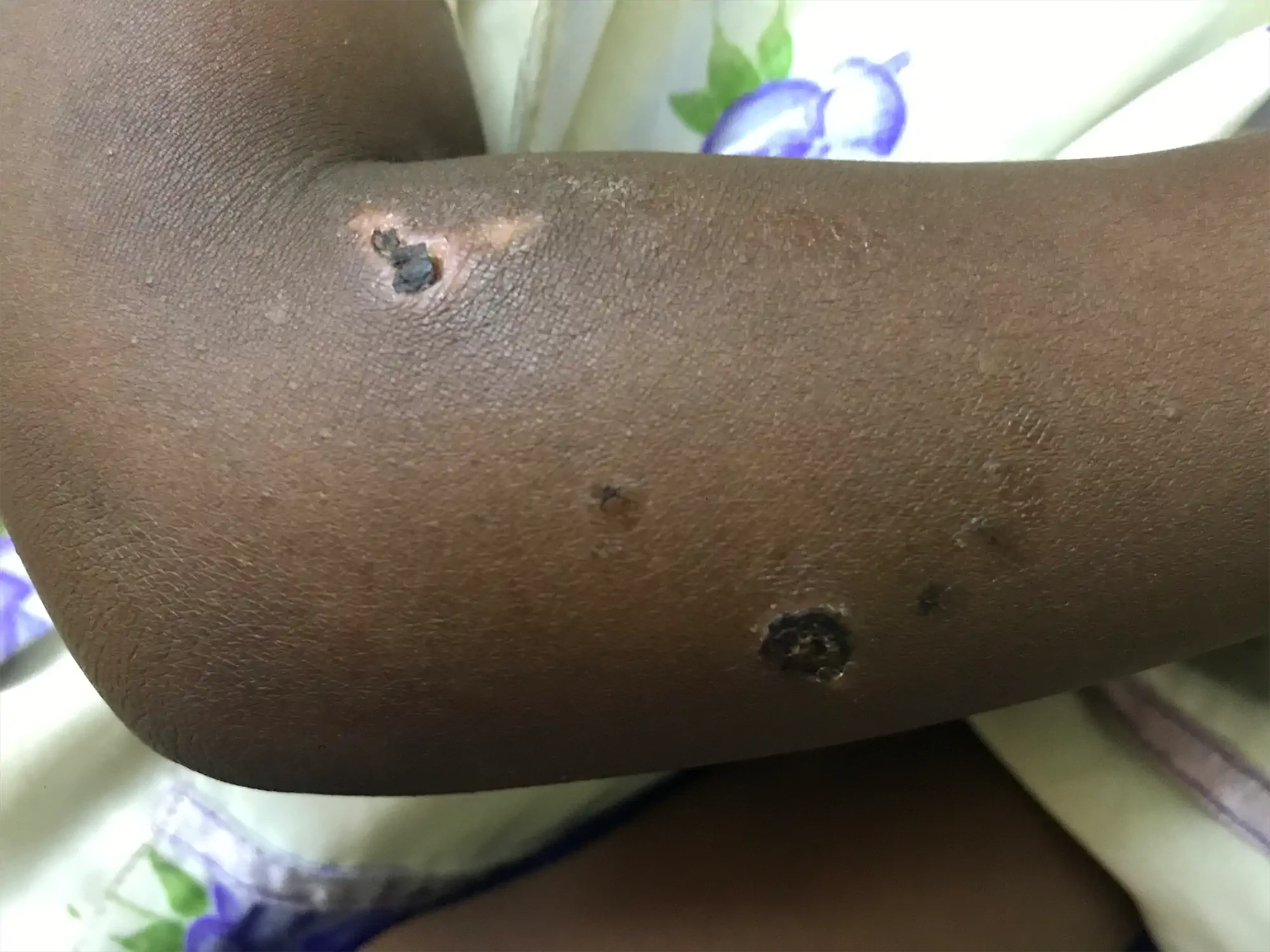
The Response
On March 7, the staff at FAME Hospital notified public health authorities of the suspected rabies case. Hospital staff reported some other dire news: three other boys had been herding cattle with the deceased at the time of the attack. The four boys had killed the dog with sticks, and all had been bitten in the process. It was now a race against time to provide potentially life-saving vaccination to the surviving boys who had been exposed to rabies. The clock was ticking.
With support from the Ifakara Health Institute (IHI) and the District Medical Officer of the Ngorongoro District, hospital staff took quick, decisive action. On March 9, a team including a doctor and social worker from FAME Hospital and two rabies control experts from IHI drove to the boy’s village to identify anyone who may have been exposed to rabies and offer them PEP. On arrival, the group interviewed the boy’s mother and completed a verbal autopsy questionnaire.9 In the absence of laboratory confirmation, this helped to confirm the clinical diagnosis of rabies. The team identified the three surviving boys bitten by the dog and found that five adult family members of the deceased boy had had extensive contact with his saliva before he died. The team also identified two girls who had recently been bitten by another unidentified dog in an unprovoked attack.
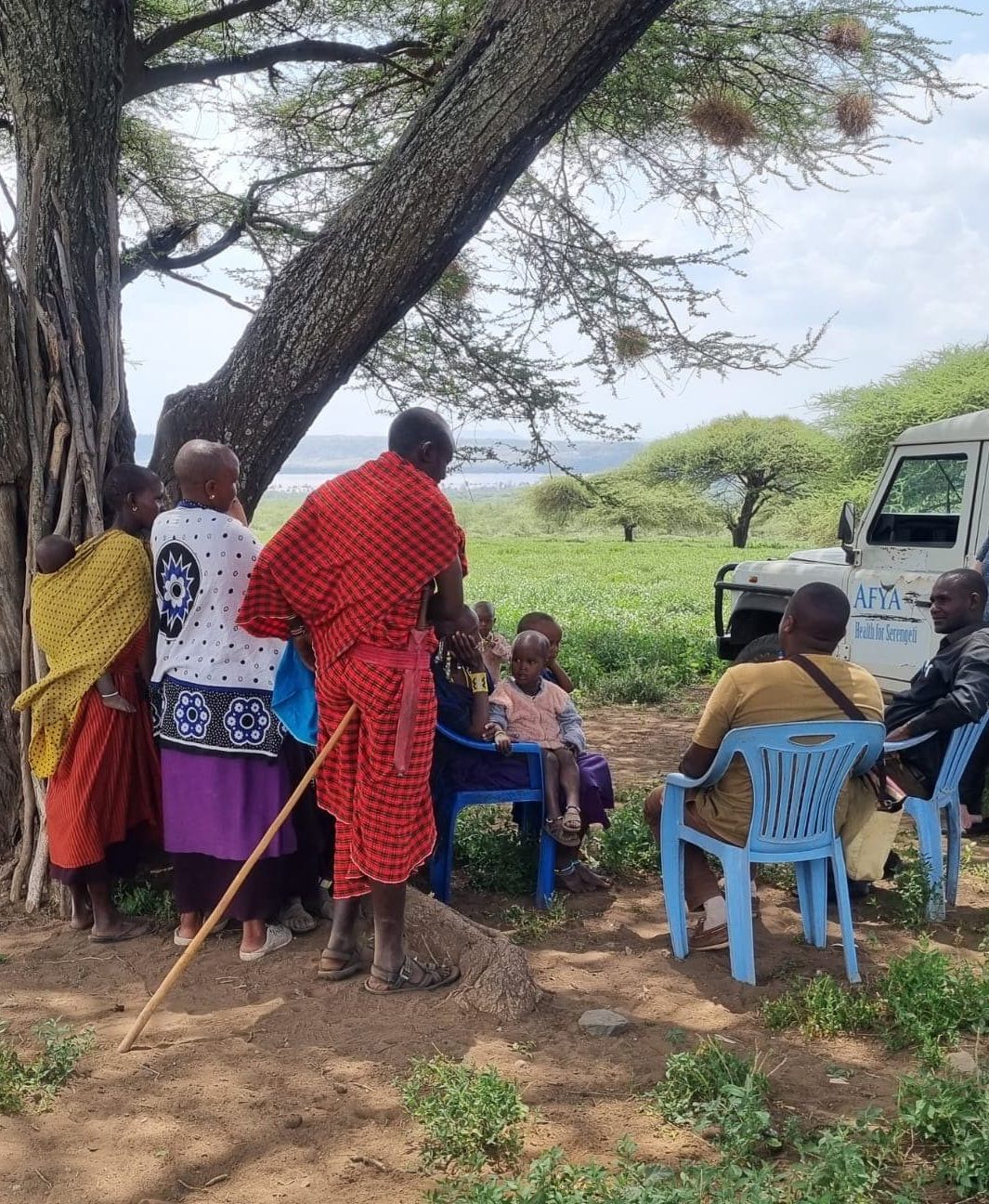

Led by the social worker, who was from the area and spoke the Maasai language, the team discussed rabies with the community. Although community members were aware of the risk of acquiring rabies from dogs, none knew that vaccination could prevent rabies if administered after exposure. The family of one of the girls bitten by the second dog had taken her to a health facility for treatment after she was bitten; however, she was not given PEP and her parents were left with the impression that all appropriate care had been provided. All 10 of the people exposed—the three surviving boys exposed to the first dog, the five adult family members exposed to the deceased boy’s saliva and the two girls exposed to the second dog—were grateful to learn about PEP and elected to receive the life-saving intervention. They were given the first dose of the PEP regimen the following day—just four days after the first case was identified.
Although the local health dispensary within the NCA did not stock rabies vaccine, the response team had brought vaccines from FAME Hospital with them and left a sufficient supply at the dispensary for all 10 exposed people to receive a complete PEP vaccination series. All contacts completed the PEP regimen and remained healthy.
The doctors’ clinical suspicion of rabies and quick reporting of the case were key to containing the outbreak, as was the team’s early, decisive action to conduct contact tracing and provide prevention to those who needed it. The team found that collaboration among multiple partners enabled a swift response and successful community engagement, and that eliminating barriers to PEP access resulted in full adherence. Until rabies is eliminated in Tanzania using sustainable and cost-effective strategies such as dog vaccination, the strategic action undertaken by the response team demonstrates how a rabies outbreak can be contained.
Key Preparedness Factors
- Risk Assessment & Planning
- Emergency Response Operations
- National Laboratory System
- Disease Surveillance
- National Legislation Policy & Financing
- Human Resources
- Risk Communications
Bottleneck
An outbreak response is multifaceted and coordinated across a range of sectors and actors. Relative weaknesses can lead to bottlenecks that delay or otherwise impair response efforts. These bottlenecks can be identified via after-action reviews and are valuable intel for improving future response efforts.
Facilitator
A disaster never happens because a single thing goes wrong. Bottlenecks or other system weaknesses are often balanced by facilitators—factors that strengthen response efforts. Facilitators can also be identified via after-action reviews and may be the direct result of system improvements following the identification of bottlenecks.
References
- World Health Organization. (2021, May 17). Rabies. https://www.who.int/news-room/fact-sheets/detail/rabies
- World Health Organization. (2021, May 17). Rabies. https://www.who.int/news-room/fact-sheets/detail/rabies
- World Health Organization. (2021, May 17). Rabies. https://www.who.int/news-room/fact-sheets/detail/rabies
- Centers for Disease Control and Prevention. (2020, July 29). Rabies around the World. https://www.cdc.gov/rabies/location/world/index.html
- Hampson K, Coudeville L, Lembo T, et al. (2015). Estimating the Global Burden of Endemic Canine Rabies. PLoS Neglected Tropical Diseases. 9(4): e0003709. https://www.ncbi.nlm.nih.gov/pmc/articles/PMC4400070/pdf/pntd.0003709.pdf
- World Health Organization. Rabies Control in Tanzania. https://apps.who.int/rabies/control/Tanzania_Project_Summary_310317.pdf
- Cleveland S, Fevre EM, Kaare M, et al. (2002). Estimating Human Rabies Mortality in the United Republic of Tanzania from Dog Bite Injuries. Bulletin of the World Health Organization. 80(4), 304-310. https://pubmed.ncbi.nlm.nih.gov/12075367/
- The United Republic of Tanzania. (July 2019). The National Rabies Control Strategy. https://static1.squarespace.com/static/60ae10230c660f2b45453582/t/61237d549a97d543daf6728b/1629715811493/National+Rabies+Control+Strategy+2019.pdf


